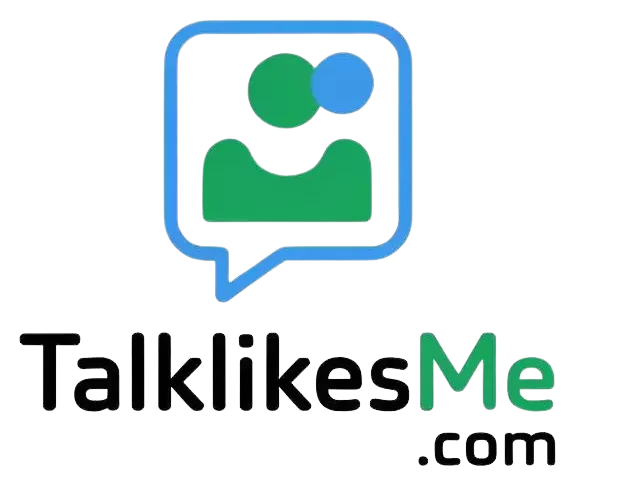Imagine you’re in the middle of a conversation, and suddenly someone exclaims, “Oml!” This reaction, filled with surprise, disbelief, or awe, can make you pause and wonder what’s triggered such an intense response.
In this post, we’ll explore 30 thoughtful and varied responses to “Oml” that can help you navigate these moments with ease and understanding.
If you’re looking to lighten the mood or seek more information, these responses will guide you through handling unexpected exclamations with grace.
1. “Wow, that’s quite a reaction! What’s going on?”
Acknowledge their surprise and prompt them to explain. I’ve used this when someone’s reaction was unexpected and needed context.
When to use: When you want to understand the reason behind their reaction.
When not to use: If you already know what’s causing their exclamation.
Example:
“Wow, that’s quite a reaction! What’s going on?”
2. “That’s a strong response! Can you fill me in?”
Encourage them to share more details. I’ve used this when their reaction seemed intense and I needed more information.
When to use: When you want them to elaborate on their reaction.
When not to use: If their reaction is already clear to you.
Example:
“That’s a strong response! Can you fill me in?”
3. “Did I miss something important?”
Prompt them to clarify what has caused their surprise. I’ve used this when their reaction made me realize I might have missed a crucial detail.
When to use: When you need to catch up on the context.
When not to use: If you’re already up-to-date with the conversation.
Example:
“Did I miss something important?”
4. “You seem pretty shocked. What happened?”
Show empathy and ask for details. I’ve used this to address their strong emotional reaction and seek more information.
When to use: When you want to express concern and understand their reaction.
When not to use: If the context is already clear.
Example:
“You seem pretty shocked. What happened?”
5. “That sounds intense! What’s the story?”
Encourage them to share the details behind their reaction. I’ve used this when their response indicated something significant occurred.
When to use: When you want to hear more about what triggered their reaction.
When not to use: If the situation is already understood.
Example:
“That sounds intense! What’s the story?”
6. “Is everything okay? You look surprised.”
Check on their well-being and address their surprise. I’ve used this when their reaction seemed to indicate distress or concern.
When to use: When you’re concerned about their reaction and want to ensure everything is fine.
When not to use: If their reaction is clearly positive or neutral.
Example:
“Is everything okay? You look surprised.”
7. “Tell me more! Why the big reaction?”
Invite them to elaborate on their response. I’ve used this to encourage them to share what prompted their exclamation.
When to use: When you want a detailed explanation of their reaction.
When not to use: If the reason behind their reaction is already known.
Example:
“Tell me more! Why the big reaction?”
8. “That’s quite a surprise! What’s going on?”
Acknowledge their surprise and seek clarification. I’ve used this when their reaction was noticeable and I needed to understand why.
When to use: When their reaction is clear and you want to know more.
When not to use: If you already understand the context.
Example:
“That’s quite a surprise! What’s going on?”
9. “Are you okay? You seem really surprised.”
Express concern and ask about their well-being. I’ve used this when their reaction suggested they might be feeling overwhelmed.
When to use: When you’re concerned about their emotional state.
When not to use: If their surprise doesn’t seem linked to any distress.
Example:
“Are you okay? You seem really surprised.”
10. “Whoa, that’s a reaction! What happened?”
React to their exclamation and seek more details. I’ve used this to express surprise at their reaction and prompt them to explain.
When to use: When you want to show that their reaction is notable and need more information.
When not to use: If you already know what caused their reaction.
Example:
“Whoa, that’s a reaction! What happened?”
11. “That’s quite a reaction! Care to explain?”
Encourage them to provide more details about their response. I’ve used this when their reaction suggested something significant occurred.
When to use: When you want to understand the reason behind their reaction.
When not to use: If you already have enough information.
Example:
“That’s quite a reaction! Care to explain?”
12. “I didn’t expect that! Can you tell me more?”
Show surprise and ask for further explanation. I’ve used this when their reaction was unexpected and required more context.
When to use: When their reaction is surprising and you want more information.
When not to use: If the context is already clear.
Example:
“I didn’t expect that! Can you tell me more?”
13. “You look pretty shocked. What’s up?”
Address their shock and prompt them to share details. I’ve used this when their reaction indicated something surprising.
When to use: When you want to understand why they’re shocked.
When not to use: If their reaction is already understood.
Example:
“You look pretty shocked. What’s up?”
14. “That’s a big reaction! What’s the story behind it?”
Acknowledge the intensity of their reaction and ask for the background. I’ve used this to get more details about what caused their surprise.
When to use: When their reaction is strong and you need more context.
When not to use: If you already know the background.
Example:
“That’s a big reaction! What’s the story behind it?”
15. “Whoa, what’s got you so worked up?”
Prompt them to explain what has caused their strong reaction. I’ve used this to understand their emotional response better.
When to use: When their reaction seems unusually intense and needs clarification.
When not to use: If their reaction is already clear.
Example:
“Whoa, what’s got you so worked up?”
16. “That sounds surprising. What’s going on?”
Seek clarification about their surprising reaction. I’ve used this when their response suggested something unexpected.
When to use: When you want to understand the reason behind their surprise.
When not to use: If the cause of their reaction is already known.
Example:
“That sounds surprising. What’s going on?”
17. “You seem pretty astonished. What happened?”
Show concern for their reaction and ask for details. I’ve used this when their reaction indicated something noteworthy.
When to use: When you want to know more about their astonishment.
When not to use: If their reaction is clear and requires no further explanation.
Example:
“You seem pretty astonished. What happened?”
18. “That’s a strong reaction! Can you elaborate?”
Encourage them to provide more information about their response. I’ve used this to gain a deeper understanding of their reaction.
When to use: When you need more details about their strong reaction.
When not to use: If the reaction is already well understood.
Example:
“That’s a strong reaction! Can you elaborate?”
19. “You look like you’ve seen a ghost. What’s up?”
Use a metaphor to address their shock and prompt them to explain. I’ve used this when their reaction was dramatic.
When to use: When their reaction is dramatic and you want them to share more.
When not to use: If the context is already clear.
Example:
“You look like you’ve seen a ghost. What’s up?”
20. “That’s quite the reaction! What’s the cause?”
Ask for the cause behind their strong response. I’ve used this when their reaction was significant and needed further explanation.
When to use: When you need to know the cause of their reaction.
When not to use: If the reason for their reaction is already known.
Example:
“That’s quite the reaction! What’s the cause?”
21. “I didn’t see that coming. Can you explain?”
Show surprise and request an explanation. I’ve used this when their reaction was unexpected and required more details.
When to use: When their reaction catches you off guard and needs clarification.
When not to use: If their reaction is already clear.
Example:
“I didn’t see that coming. Can you explain?”
22. “That’s a lot of surprise! What’s behind it?”
Ask for the reason behind their surprising reaction. I’ve used this when their response was particularly intense.
When to use: When you want to understand the reason for their surprise.
When not to use: If the reason is already clear.
Example:
“That’s a lot of surprise! What’s behind it?”
23. “You seem really surprised. What’s the story?”
Express empathy and seek details about their reaction. I’ve used this to get more context on their surprising response.
When to use: When you want to understand their surprising reaction better.
When not to use: If you already know the story.
Example:
“You seem really surprised. What’s the story?”
24. “That’s a big reaction. Can you tell me more?”
Encourage them to share more details about their response. I’ve used this to prompt a deeper explanation.
When to use: When you need more information about their reaction.
When not to use: If you already understand the reaction.
Example:
“That’s a big reaction. Can you tell me more?”
25. “Whoa, what’s got you so surprised?”
Ask for the reason behind their surprise. I’ve used this when their reaction seemed significant and needed context.
When to use: When you want to understand their surprise.
When not to use: If the cause of their reaction is already known.
Example:
“Whoa, what’s got you so surprised?”
26. “That’s an intense reaction. What happened?”
Acknowledge the intensity of their response and ask for details. I’ve used this to address their reaction and prompt an explanation.
When to use: When you want to know more about their intense reaction.
When not to use: If you already have enough context.
Example:
“That’s an intense reaction. What happened?”
27. “You look startled. What’s going on?”
Address their startled reaction and seek more information. I’ve used this to understand their surprise better.
When to use: When their reaction indicates they’re startled and need to explain.
When not to use: If you’re already aware of what caused their reaction.
Example:
“You look startled. What’s going on?”
28. “That’s quite a reaction! Can you tell me more about it?”
Prompt them to provide additional details about their reaction. I’ve used this to get more information about what triggered their surprise.
When to use: When you want further details about their reaction.
When not to use: If the reason behind their reaction is already clear.
Example:
“That’s quite a reaction! Can you tell me more about it?”
29. “You seem overwhelmed. What’s the issue?”
Show concern and ask for details about their overwhelming reaction. I’ve used this to express empathy and seek clarification.
When to use: When their reaction indicates they are overwhelmed and need to explain.
When not to use: If their reaction is not linked to feeling overwhelmed.
Example:
“You seem overwhelmed. What’s the issue?”
30. “That’s a significant reaction. What’s the reason?”
Seek clarification about their strong response. I’ve used this when their reaction was particularly notable and required more context.
When to use: When you need to understand the reason behind their reaction.
When not to use: If the cause of their reaction is already evident.
Example:
“That’s a significant reaction. What’s the reason?”



